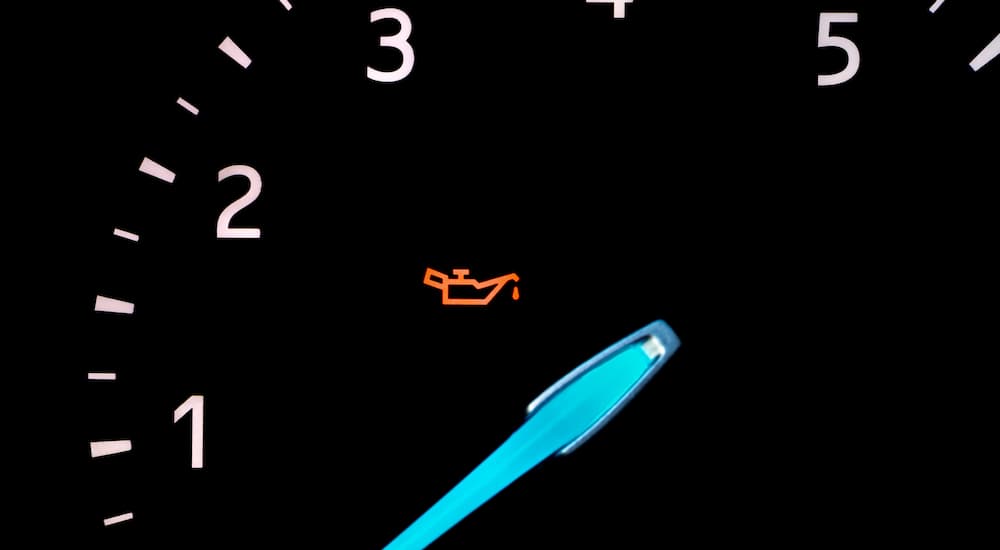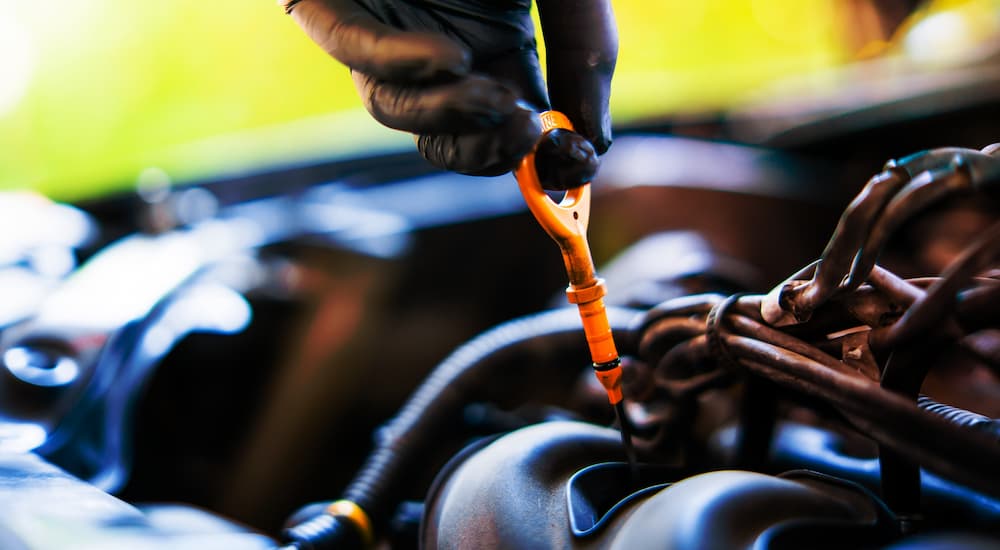An oil change is one of those things that every driver is aware of, but some pay more attention to than others. Unless you have an EV, your vehicle needs to change its oil regularly to keep running well. But exactly how often an oil change needs to happen can be unclear if you’re uncertain. Ask four people, and you may well get four different answers. There are a few reasons why this seemingly simple process seems so muddled: different vehicles have different needs, driving styles can impact your ideal oil change schedule, and as engines and synthetic oils have improved over time, old rules of thumb have become outdated.
With all of this in mind, let’s zoom in on one particular oil change: your very first one in a new vehicle. Is this first oil change special? Does it need to be done early? If so, how early and why? We’ll take a close look and let you know what you need to do as a new car owner.
The Break-In Period
While this is sure to be old news to enthusiasts, not all drivers know about the process of breaking in a new vehicle. The basic idea is that certain engine components, like piston rings and gas cylinders, are settling into place during the early life of your vehicle, so you want to avoid uneven wear. You also want to let the mechanical system adjust to normal driving before putting too much stress on them. Breaking in a vehicle isn’t too important for most everyday drivers. Take a look at an owner’s manual, and it might even tell you that your vehicle doesn’t require a break-in. But doing this right can improve your performance and fuel economy in the long run.
Like most things, break-in rules can vary from vehicle to vehicle. It’s always a good idea to consult your owner’s manual for instructions specific to your car, truck, or SUV. However, there are a few basic things that are generally considered to be good practices and have been for at least a few decades now. Here are the three main rules of breaking in a new vehicle:
- Do your best not to make hard stops for the first 200 miles (though, of course, it’s better to break this rule than to rear-end someone during a sudden slowdown on the highway). This rule applies to the first 200 miles any time you get new brake linings because it can wear them down prematurely.
- Don’t drive at any one speed for too long for the first 500 miles. Don’t go too fast or too slow, and definitely avoid cruise control. No full-throttle starts and no downshifting to slow your vehicle down or bring it to a stop.
- Don’t tow a trailer during the break-in period. That period differs from vehicle to vehicle but generally is the first 500-1000 miles.

Should the Oil Be Changed During the Break-In?
Looking through the main guidelines listed above, you’ll notice that none of them have to do with changing your oil. That’s because most vehicles these days don’t need an oil change during the break-in period. Some enthusiasts still argue that you should get an initial oil change at 500 miles, or even as soon as 20 miles, in order to flush out the break-in oil and any metal debris that has accumulated in it. But others point to improvements in manufacturing that have made this early oil change largely obsolete. The oil put into your vehicle in the factory is just fine, and most agree that it’s a waste of time and money to change it out before it’s necessary.
Exceptions to Break-In Rules
While most drivers have a fairly simple break-in process and don’t need to worry about getting their first oil change early, there are some exceptions. If you have a performance car, you probably have more steps in the “New Vehicle Break-In” section of your owner’s manual, and you probably care a lot more about making sure that your vehicle has every possible advantage when it comes to performance.
Looking at the manual for the 2023 Corvette, the 1,500-mile break-in period is divided into three sections, so you have different instructions for the first 200 miles, 500 miles, and 1,500 miles that need to be followed for best results. But while the manual says to check oil levels every time you refuel because consumption may be higher than usual, it doesn’t say anything about getting an early oil change.
However, if we go a few years back to the owner’s manual of the 2017 Corvette, we finally find the instruction we’ve been looking for: “The initial oil and filter change must be performed at 800 km/500 mi.” But looking more closely, you’ll find that this only applies to vehicles “equipped with a dry sump engine.” The term “sump” here simply refers to the oil pan, which has oil in it pretty much constantly in a wet sump engine. A dry sump engine works differently. It has two pumps, and its name derives from the fact that one of these basically sucks oil out of the pan, leaving it dry.
Dry-sump systems can improve engine reliability in some situations and improve handling and stability, which is why you tend to find them in race cars. However, their cons outweigh their pros for most everyday drivers since they cost more, weigh more, and are better suited to driving around a track than driving around a neighborhood. And on top of that, they require more oil and maintenance than wet sump systems. One part of that maintenance is the early oil change.

In the End, Consult the Owner’s Manual
All of that sounds quite complicated, but the conclusion is simple: read your owner’s manual. If your vehicle has a dry-sump system or any other reason to require an early oil change, you’ll find instructions listed clearly. These days, you can find just about any owner’s manual online, so you can search for particular terms and jump right to the relevant section. In this case, a simple search for “break in” should get you what you need.
This whole topic is a great example of why it’s important for drivers to make sure that any advice they’re hearing or reading is applicable to them before they take action. Since cars have been around for over a century, plenty of rules used to be so ingrained in the zeitgeist that they’ve stuck around even though they’re now outdated. Looking at motor oil alone, there’s not just the idea that the first oil change should be done at 500 miles but also the rule of thumb that oil needs to be changed every 3,000 miles. This is no longer true—modern engines can go much further between oil changes, from 7,500 miles to over 10,000 with normal driving.
When you see a general rule of thumb about car maintenance, always look at the source. If you’re looking at an article that’s several years old, then take everything with a big grain of salt because automotive technologies are changing all the time, and not all old rules apply to new vehicles. And if you’re an everyday driver, don’t take advice from performance enthusiasts as gospel. Cars built for the track simply have different needs than those built for commutes and errand runs. And it can’t be overstated: when in doubt, check your owner’s manual.

